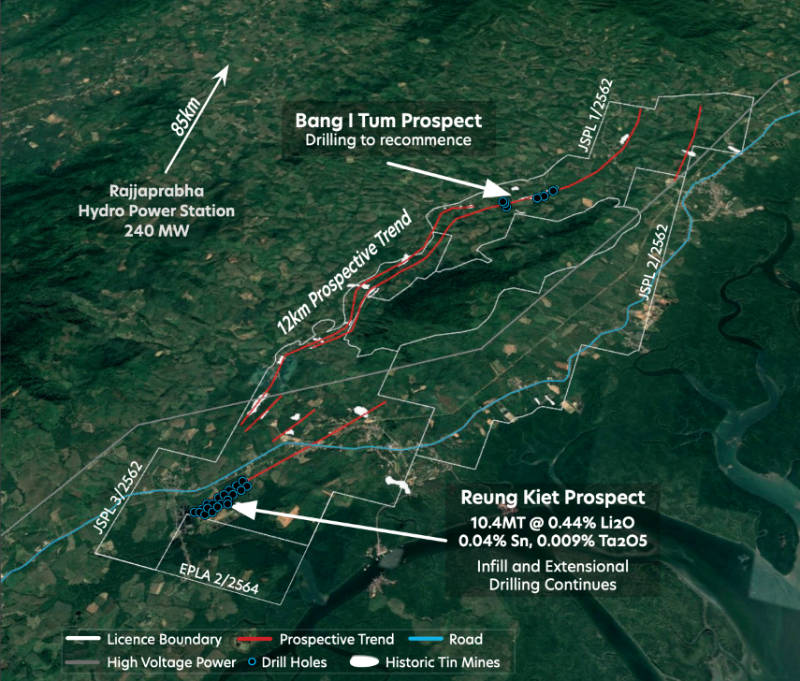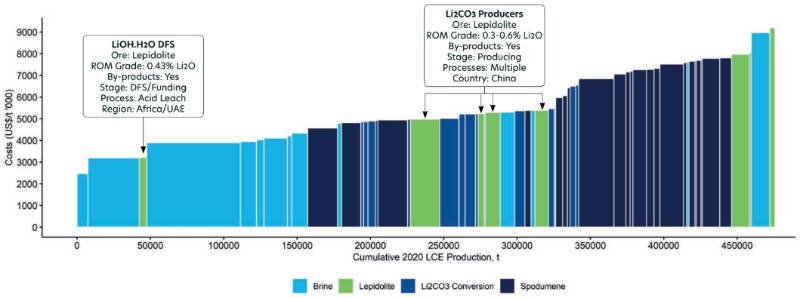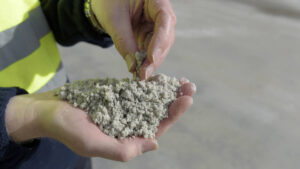Rueng Kiet lithium resource opens the door to a bright future for Pan Asia

Reung Kiet lithium resource has Pan Asia ready to take the next step to success. Pic via Getty Images
Pan Asia has not only unveiled the inaugural resource for its Reung Kiet lithium prospect in Thailand, it has also flagged further growth and a secret weapon to boost head grades.
Reung Kiet now has an Inferred resource of 10.4Mt grading 0.44% Li2O, 0.04% tin, 0.009% tantalum, 0.16% rubidium and 0.02% caesium, or about 113,000t of lithium carbonate equivalent.
The inaugural resource is a significant milestone for Pan Asia Metals (ASX:PAM) as it progresses towards a Scoping Study later this year, but there is plenty more at the prospect that will provide a real edge for the company.
For starters, Reung Kiet lepidolite mineralisation starts from surface and is amendable to open cut mining, which vastly simplifies mine planning.
It also remains open along strike and at depth, meaning that there is plenty of room for growth – which is likely to happen sooner rather than later given that the company has completed 27 holes since then, is currently drilling two holes and could drill another 20 holes.
“This will entail both infill and extensional drilling, which should enable PAM to report an upgraded MRE for the Reung Kiet Prospect later this year, in which we can expect to see an increase in the Resource tonnes and the conversion of the Resource from an Inferred to an Indicated and possibly Measured classification under the JORC Code,” managing director Paul Lock says.

Behold! The secret weapon…
While the Reung Kiet resource grade is comparable or better than its lepidolite peers, Lock noted that the block model used to define resources meant the inclusion of waste siltstone which dilutes the average grade of the resource.
However, the same siltstone also presents the company with a simple opportunity to upgrade the resource grade prior to processing.
“Ore sorting can address this by rejecting the siltstone, and is being used successfully on many projects globally, and will form part of PAM’s scoping study work.
“If successful, and we see no real reason why it would not be, we would see an uplift in the head grade to the beneficiation plant, which means that we would be processing a higher grade ore than that reflected in our MRE.”
This will likely result in a boost to the already attractive economics involved in processing lepidolite mineralisation, which is already cheaper than processing most spodumene mineralisation – currently the most common lithium mineral mined in Australia.
Processing cost advantage
The use of alkaline salt roast to process lepidolite in China has already proven to result in generally lower processing costs and emissions.
Reung Kiet’s shallow nature and the likely ease of upgrading material will also lend itself towards reducing the cost of production.
To top it off, there is also potential for numerous by-products for local markets such as tin-tantalum concentrates, fine sand/feldspar and clay concentrates, bulk and crushed waste rock products that will also reduce the amount of waste produced.
Lock noted that the company’s metallurgical work will investigate the quantum of tin and tantalum that can be extracted during beneficiation as well as the potential for the production of industrial grade bulk materials.
The company’s process route selection will also determine whether it can extract potassium, rubidium and caesium as well as other industrial chemicals.

Thailand battery production
Pan Asia’s definition of an Inferred Resource at Reung Kiet is a key step in the company’s goal of producing battery-grade lithium compounds in Thailand, a major car manufacturer that is already transitioning towards producing electric vehicles.
With 14 battery EV projects and 18 battery projects already underway in the country, it is no surprise that demand for lithium-ion batteries is increasing with supply demand projections supporting tight markets.
This ensures demand for lithium produced from Reung Kiet or any of the company’s other lithium prospects especially given the current global interest in securing supply chains.
Upcoming activity
Looking ahead, the company expects to report results from drill holes RKDD0047 onwards once they are available.
This program, which is split about evenly between infill and extensional drilling, will be incorporated into an updated Resource estimate later in the year.
Pan Asia expects to be able to upgrade some of the resource into the higher confidence Indicated and Measured categories, which will allow for more robust mining studies to be undertaken as part of the Scoping Study and into Pre-Feasibility work.
It is also awaiting the grant of EPLA 2/2564 at the southern end of Reung Kiet, which will allow for further extensional drilling.
Once drilling is completed at Reung Kiet, the company will move its rigs to the Bang I Tum prospect where it will continue investigative drilling that was started early in 2021 which had identified a pegmatite dyke swarm of more than 100m in width.
Metallurgical test work is currently underway to optimise the recovery of lepidolite to a concentrate, which will be used to test various downstream processing methods to produce a variety of lithium compounds and various potential by-products.
Additionally, ore sorting work will be carried out to investigate the potential to separate and recover the higher grade pegmatite from the lower grade siltstone.
This article was developed in collaboration with Pan Asia Metals, a Stockhead advertiser at the time of publishing.
This article does not constitute financial product advice. You should consider obtaining independent advice before making any financial decisions.
Related Topics

UNLOCK INSIGHTS
Discover the untold stories of emerging ASX stocks.
Daily news and expert analysis, it's free to subscribe.
By proceeding, you confirm you understand that we handle personal information in accordance with our Privacy Policy.








